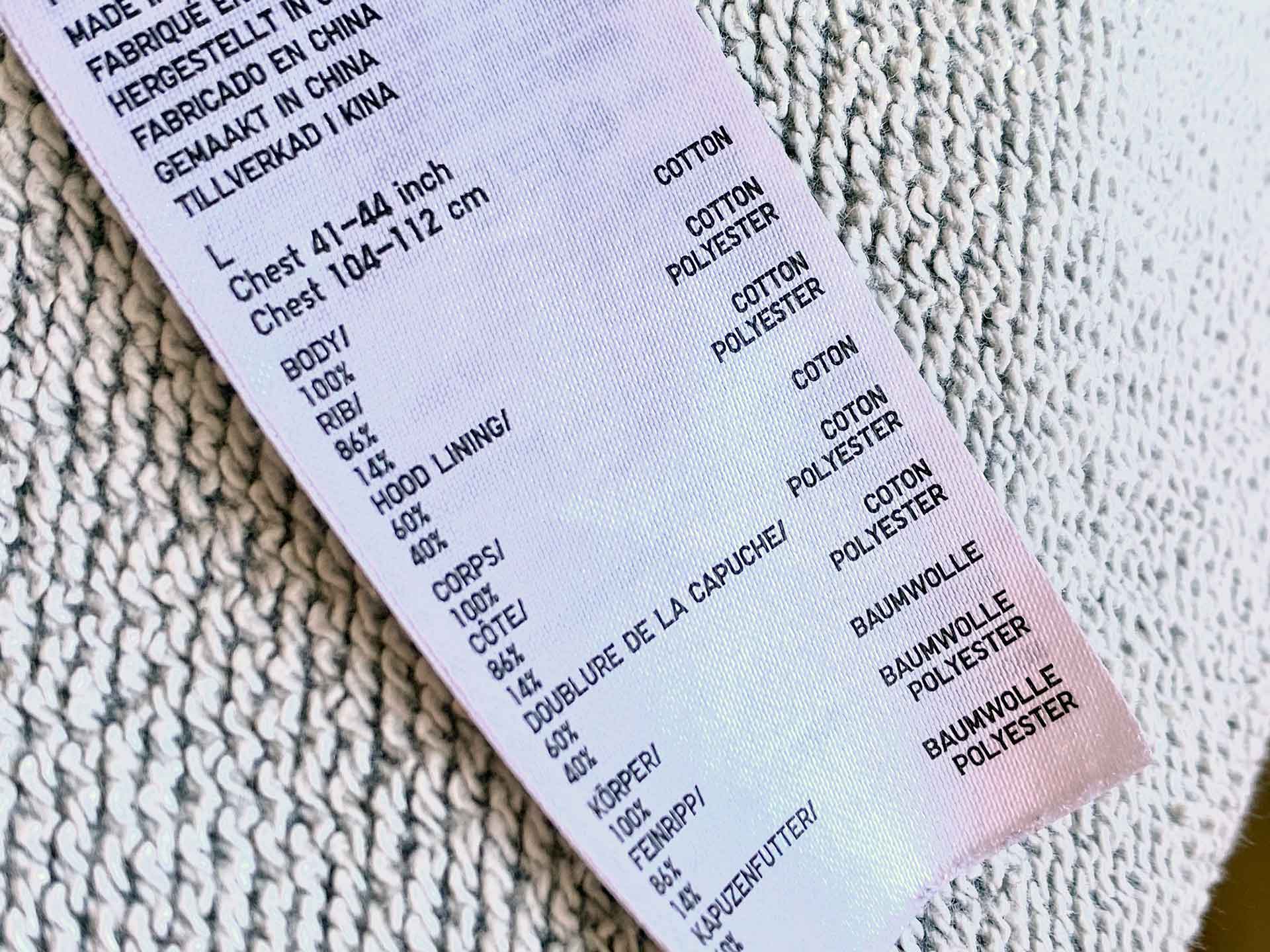
What should you write on your garment labels?
Do you even need them?
Some things you can put on the labels just because you feel like it, but some information is required by law. The garment label requirements depend on where you are selling your clothes, but also what type of garments you are selling. Check the specific regulations and specifications for all the countries you intend to sell in or export to. Some countries have very stringent requirements.
Before we cover general requirements for the US, UK, and EU, we want to give some tips and heads-up regarding regulations and requirements concerning clothing labels around the world:
Textile labels are mandatory in the EU. This applies to textiles that are intended for sale to the general public. EU has a variety of regulations regarding the labeling of textile products. A textile product is considered a product that contains more than 80% of textile fibers of the entire weight.
The labels must be in the native language where the garments are sold, and the labels must be attached in a secure and durable way. There are no standards in the sizing of labels, you as a brand chose the size you want.
Also, the following info should be included:
Important note:
EU has very high requirements for the safety of textile products like children’s clothing & nightwear, workwear, and safety products. Check those specifically.
Use uniform fonts, sizes, and styles for all text on the labels.
When it comes to standard sizing, you can take a look at the EN 13402 European standard for size labeling of clothes.
Here are the requirements and regulations for clothing labels in the UK:
An apparel product care label must contain the following:
Requirements for the United States are quite stringent, and companies that don’t comply with these requirements may end up paying penalties. The labeling requirements only apply when the products are sold to the consumers.
In the US, the CPB – US Customs and Border Protection and FTC – the Federal Trade Commission are the authorities responsible for the labeling requirements and control.
An apparel product care label must have:
Extra Notes:
Australia’s labeling laws are enforced by ACCC. Australia has different laws, depending on the state your brand operates in, so make sure you check locally.
An apparel product care label in Australia must have:
Check these links for requirements in Australia regarding country of origin:
https://www.legislation.gov.au/Details/C2014C00486
https://www.legislation.gov.au/Details/C2008C00319/Html/Text#param20
https://www.legislation.gov.au/Details/C2014C00496
Some manufacturers can help you out with the making of care labels, or you can contact a trims supplier that’s specialized. Whatever you chose, there’s no right or wrong, as long as the quality is good and you are happy with the end result and price.
No matter the supplier choice, you will be the one responsible for deciding the materials, the colors, the fonts, the logo or no logo, and all the content written on the labels, including care labels. You can create files in .ai or .eps or .jpg.
And what info do they need to have from you to create your labels?
The more detailed your instructions are, the better it is.
Care Symbols – When it comes to the care symbol requirements and what actually to use for your products, there are some main symbols to keep in mind:
There are different symbols in different countries, so check what symbols are to be used in your country and the main target market.
Care symbols are standardized for textile products under ASTM D5489-96c.
To help you along the way and make sure you don’t miss anything, here are a couple of questions to ask yourself and to double-check for your specific country and sales markets:
Are there any requirements for label positions and attachments?
Not really, but most brands want to clearly show their brand name label, placed on the inside, at the neck, most of the time together with the size label. This makes it easier for the customer to clearly see the size when shopping.
Care labels are placed on the inside of the hue garment, at the side seam, on the left side, or on the inside at the waistband.
Is it a good idea to include other text or content on labels?
Absolutely! It’s up to each brand to entice the customer and users and to communicate with them in as many creative ways as possible. Small notes like “You look awesome today!” can make the customer feel great when wearing your brand and product.
Brands have also used labels to make a stand and communicate what the brand stands for. It is entirely up to the brand to include whatever you feel is relevant and helps you communicate your why, vision, and mission to your customers and users.
https://www.aafaglobal.org/AAFA/Solutions_Pages/U.S._Labeling_Resources.aspx – US Labeling Resources
https://www.ftc.gov/tips-advice/business-center/guidance/threading-your-way-through-labeling-requirements-under-textile – THREADING YOUR WAY THROUGH THE LABELING REQUIREMENTS UNDER THE TEXTILE AND WOOL ACTS
https://ec.europa.eu/growth/sectors/fashion/textiles-clothing_en – EU
https://ec.europa.eu/environment/ecolabel/index_en.htm – EU Ecolabel
https://eur-lex.europa.eu/legal-content/EN/TXT/?uri=CELEX:02011R1007-20180215 – EU
https://en.wikipedia.org/wiki/Joint_European_standard_for_size_labelling_of_clothes
http://www.care-labelling.co.uk
https://www.productsafety.gov.au/standards/care-labelling-for-clothing-textiles
This Course will guide you through our proven 6-step success blueprint, on how to go from just an idea, to learning exactly what it takes to launch your own profitable sustainable apparel brand.
Your data will be handled according to our privacy policy.